
Many of what I consider to be the most successful and influential concept artists are unconventional and highly stylistic,” says Logan Preshaw, who acknowledges that defining a new style in concept art is difficult. “But when I think there couldn't possibly be any more originality left to be explored, a fresh new artist crops up and blows that presumption away. I think the key to that is working towards a style that combines all of your most treasured influences, because the result of that probably doesn't exist yet.”
In Logan’s work that often means painting colour with abandon. It’s a refreshing approach for an artist with a career that’s seen him work at Weta Workshop, Studio Moshi, Working Dog and numerous studios in and around his native Australia and New Zealand. For an artist who’s CV lists video games Valorant and League of Legend, as well as films such as Men In Black: International, and the forthcoming Avatar sequels, that’s impressive.
His paintings, both personal and professional, feature explosions of colour. They’re loose and active, and rarely let the eye settle. He tells us it was never a conscious choice to make colour a dominant part of his art. “While I was defining my approach to painting I played with colour in many ways until it began to look appealing to me… and I mean not just realistic, but appealing and pleasurable,” Logan explains. “I do that with many elements in my work, but I think the general audience notices colour first and they're less likely to pay attention to other fundamentals like perspective, contrast and form language.”
This story is from the {{IssueName}} edition of {{MagazineName}}.
Start your 7-day Magzter GOLD free trial to access thousands of curated premium stories, and 9,000+ magazines and newspapers.
Already a subscriber ? Sign In
This story is from the {{IssueName}} edition of {{MagazineName}}.
Start your 7-day Magzter GOLD free trial to access thousands of curated premium stories, and 9,000+ magazines and newspapers.
Already a subscriber? Sign In
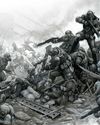
PAINT EPIC BATTLES IN TRADITIONAL INK
Warhammer illustrator THOMAS ELLIOTT shows you how to create an epic science fiction fight scene with this step-by-step guide
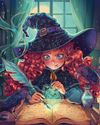
CONJURE MAGIC ILLUSTRATIONS
Daria Anako demonstrates her process for creating a whimsical piece of art with some spellbinding touches
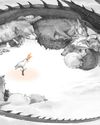
First Impressions
We discover the early influences that inspired the artist
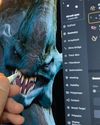
ZBrush for iPad
GAME CHANGER The desktop version of popular 3D sculpting software ZBrush has been redesigned for iPad - and it's brilliant

BenQ GW2786TC
GET AN EYEFUL Don't scrimp out on your health with a monitor that's kind on the eyes and good for creative tasks
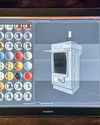
Huion Kamvas Pro 19
TABLET WARS An attractive pen display does an excellent job of balancing price and performance as it sets out to challenge its rivals in the mobile marketplace
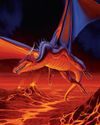
DRAGON OFORCEC
Legendary D&D artist Larry Elmore explains the keys to crafting timeless fantasy art.
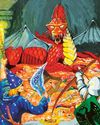
DUNGEON MASTERS
ImagineFX marks the milestone 50th anniversary of the launch of Dungeons & Dragons with a look at its rich tradition of illustration
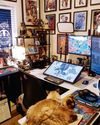
Erik Ly
Gamer's haven Why the artist enjoys a maximalist aesthetic more than the minimalist approach.

2D meets 3D: How the workflows are merging
Interdimensional As VFX and animation evolve and tools become more accessible, Tanya Combrinck asks whether the separation between the mediums is reducing